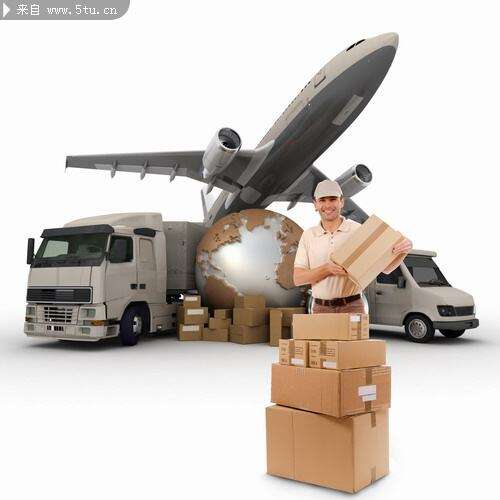Australia customs clearance import export
1、 Imports
The customs declaration of imported goods is divided into two stages.
(1) Declaration(Australia customs clearance import export)
The first stage declaration shall be made before the goods actually arrive in Australia. The declaration contents include the details of transportation mode and voyage, cargo information, estimated arrival time in Australia, etc. Declaring these information in advance can enable Australian customs and inspection and quarantine departments to carry out risk analysis in advance and speed up inspection and release.
One stage declaration of all goods must be made through the Integrated Cargo Clearance System (ICS) of Australian Customs and Border Protection. Transit goods and transit goods must also be declared to the customs electronically. The cargo information can be submitted to the ICS system before the cargo arrives at the port. After receiving various declaration information, the system will deal with them in order when necessary (except for bonded handling applications, which must be submitted after relevant cargo reports).
This "early declaration and early tracking" mode can enable declarers to declare goods as early as possible, track the status of goods transportation and declaration acceptance as early as possible, know when goods will be released, and speed up customs clearance.
Status tracking is mainly divided into three stages: after the "pre arrival report of goods" is submitted; After the risk analysis of "cargo report" is completed; 3. After the means of transport for imported goods leaves the last overseas port.
1. Declaration of marine cargo
The first marine cargo declaration document is the "Pending Arrival Report" (IAR), followed by the "Cargo List Report" (CLR) and "Sea Cargo Report" (SCR). The above report must be submitted before the cargo arrives at the first Australian port.
After the goods arrive at each Australian port, the Actual Arrival Report (AAR) must be submitted.
All marine cargo discharged from the ship shall be provided with unloading report. There are two formats for marine cargo unloading report:
-For container goods, the Cargo Terminal Operator (CTO) shall submit the Progressive Discharge Report (PDR);
-For bulk and bulk cargo, submit the Sea Cargo Outturn Report.
The marine cargo can be released after unloading from the ship (if necessary, it can only be released after going through the formalities of tax payment and inspection release), bonded transit transportation or unpacking. The application for bonded movement (UBMR for short) must be submitted before release.
After the goods arrive at the wharf or warehouse, the unloading report shall also be submitted to release the handling guarantee, also known as the "unloading report of the consignee".
The time limit for declaration of the above documents and documents and the requirements of the declarer are as follows:
Documents
Number of copies
person in charge
Time limit for declaration
Declarer
Report before arrival of goods
One report for each voyage
Ship operator
96 hours to 10 days before arriving in Australia
Ship operator, its main agent or port authority
Marine Cargo Report
One bill of lading and one report
Goods reporter
At least 48 hours before arriving in Australia
Cargo reporter, his agent or port authority
Arrival report
One report for each port
Ship operator
Within 24 hours after arriving at the port or within 24 hours before the port gives clearance permission (whichever is earlier)
Ship operator, its main agent or port authority
Unloading report
One report for each port
Cargo terminal operators and porters
Within 5 days after unloading
Cargo terminal operator, porter or port authority
Installment report
Cargo terminal operators and porters
Within 3 hours after the unloading of container cargo starts, and then report every 3 hours until the unloading is completed
Cargo terminal operator, porter or port authority
Bonded handling application
Submit one application for each bonded handling
Any party related to the goods
After the submission of the relevant "Marine Cargo Report" and before the cargo is moved to another dock or warehouse
Cargo related party or port authority
Ship to Unloading Report (Container Cargo)
Party receiving bonded handling goods
Within 24 hours after opening the package, or within 24 hours after the goods are transported to the CTO/warehouse without opening the package
The party receiving bonded handling goods or the port authority
Ship To Unloading Report (Bulk)
Warehouse, cargo terminal operator or porter receiving bonded handling goods
Before the end of the first working day after unloading
Warehouse, cargo terminal operator, porter or port authority
remarks:(Australia customs clearance import export)
(1) The declaration time limit for goods transported between ports near Australia is shorter;
(2) "Cargo reporter" refers to those who organize the transportation of goods to Australia, including ship operators, container space charterers and freight forwarders;
(3) If the voyage is shorter than 48 hours, the shorter report shall be selected from the time limit specified by relevant laws and regulations;
(4) "Party related to cargo" refers to the ship operator, the main agent of the ship operator, the current custodian or the next custodian (porter or warehouse) of the cargo, the cargo reporter, and the authorized customs broker (only in transit).
After the above reports are submitted, they will be automatically associated with the relevant reports received by the ICS system. The fields that can be associated include: ship name and voyage, the last overseas port before arrival and the date and time of departure from the port, the port of entry, and the party responsible for receiving the cargo discharged from the ship at the first time.

 EN
EN
 AR
AR
 BG
BG
 HR
HR
 CS
CS
 DA
DA
 NL
NL
 FI
FI
 FR
FR
 DE
DE
 EL
EL
 HI
HI
 IT
IT
 KO
KO
 NO
NO
 PL
PL
 PT
PT
 RO
RO
 RU
RU
 ES
ES
 SV
SV
 TL
TL
 ID
ID
 LT
LT
 SR
SR
 SK
SK
 SL
SL
 VI
VI
 ET
ET
 HU
HU
 MT
MT
 TH
TH
 TR
TR
 FA
FA
 AF
AF
 MS
MS
 GA
GA
 KA
KA
 LA
LA
 MY
MY















